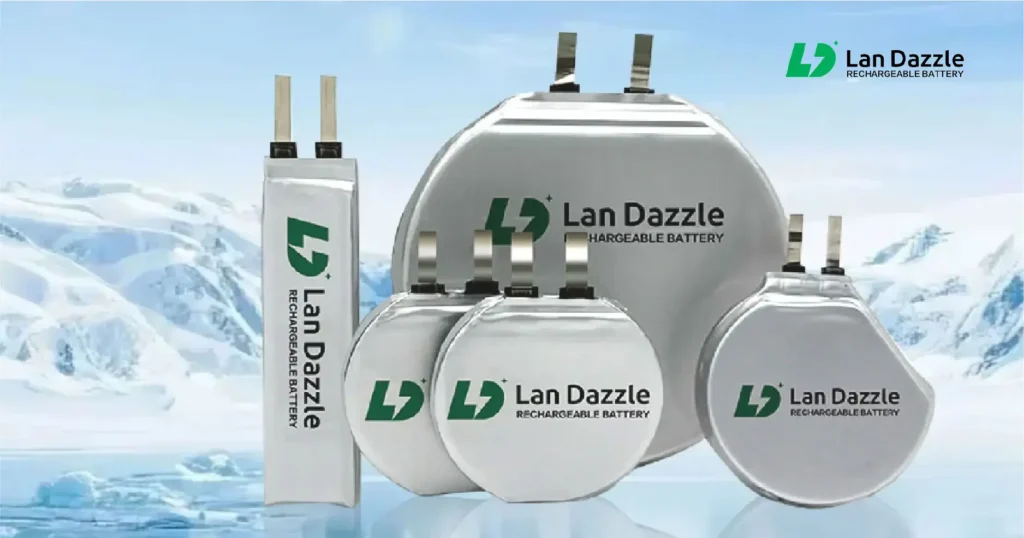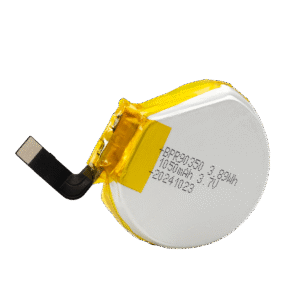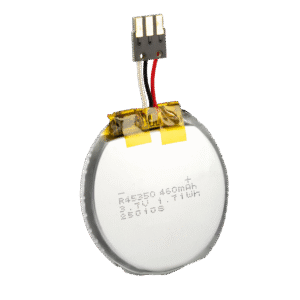Lithium batteries are widely used in drones, electric vehicles, and outdoor electronics — but their performance can quickly drop when the temperature falls below freezing. At low temperatures, a standard lithium battery may lose up to 40% of its capacity, making it unsuitable for cold regions or winter applications. This is where بطاريات الليثيوم ذات درجة الحرارة المنخفضة come in — engineered specifically to maintain performance in extreme environments.
In this article, you will learn lithium battery low temperature performance, why cold weather affects battery performance, and the key technologies that make these batteries reliable in sub-zero conditions.
Why Lithium Batteries Struggle in Cold Weather
When the temperature drops below 0°C (32°F), several physical and chemical changes occur inside a regular lithium-ion cell:
- Reduced Ion Mobility – The electrolyte becomes more viscous, slowing down the movement of lithium ions between the cathode and anode.
- Increased Internal Resistance – The chemical reactions that generate current slow down, causing higher resistance and voltage drop.
- Lithium Plating Risk – Charging a cold battery can cause metallic lithium to deposit on the anode instead of intercalating safely, leading to permanent capacity loss or short circuits.
- Lower Capacity Output – Since ions move sluggishly, the battery cannot deliver its rated current, resulting in less available energy.
These effects explain why smartphones, drones, or electric vehicles often shut down faster in freezing temperatures. The challenge is to design a lithium battery that can operate efficiently even at -20°C or lower.
How Does Low Temperature Lithium Battery Work?
Core Principle: Keeping Electrolytes Active at Low Temperatures
The heart of any lithium battery is its electrolyte — the medium that carries lithium ions between electrodes.
In a low temperature lithium battery, the electrolyte is specially formulated to remain liquid and conductive at extreme cold.
Typical strategies include:
- Using low-freezing-point solvents: Replacing or mixing the usual carbonate solvents (like EC or DMC) with ones that flow more easily at low temperatures (such as EMC or DEC) helps keep the electrolyte from freezing.
- Advanced lithium salts: Using special salts like LiTFSI instead of the usual LiPF₆ helps the battery ions move more easily, even at very low temperatures like -40°C.
- Additives for SEI Stability: Chemical additives form a stable solid electrolyte interface (SEI) layer on the anode surface, preventing lithium plating during cold charging.
For reference:
- EC (Ethylene Carbonate) – helps make the battery more stable but is thick and doesn’t flow well at low temperatures.
- DMC (Dimethyl Carbonate) – thin and flows easily, improves low-temperature performance.
- EMC (Ethyl Methyl Carbonate) – flows well at low temperatures and conducts ions efficiently.
- DEC (Diethyl Carbonate) – thin and easy to flow, often mixed with others to improve low-temperature performance.
- LiPF₆ (Lithium hexafluorophosphate) – the standard lithium salt in most batteries, works well at room temperature but loses performance in extreme cold.
- LiTFSI (Lithium bis(trifluoromethanesulfonyl)imide) – a more advanced salt that keeps ions moving smoothly even at very low temperatures, improving battery performance in the cold.
This combination allows low temperature lithium batteries to maintain ion mobility even when frozen on the outside — a critical reason they outperform standard Li-ion batteries in cold climates.
Electrode Material Innovations
إن electrode materials also play a decisive role in low-temperature performance.
- Anode Improvements: Traditional graphite anodes suffer from lithium plating below 0°C. Alternatives like hard carbon أو lithium titanate (LTO) provide better low-temperature charge acceptance and faster kinetics.
- Cathode Selection: Cathodes such as LiFePO₄ (LFP) و NMC (Nickel Manganese Cobalt) are commonly optimized with conductive coatings or nano-structures to reduce internal resistance.
- Particle Size Optimization: Smaller particles shorten the diffusion path for lithium ions, enabling more efficient charge/discharge cycles in the cold.
Together, these materials ensure that low temperature batteries can still deliver high power and acceptable capacity — often over 70% of rated capacity at -40°C, compared to less than 30% for standard cells.
Structural and Design Enhancements
Low temperature lithium batteries are not just about chemistry; their physical structure and system design matter too.
- Internal Heating Elements: Some battery packs include self-heating film layers or resistive heaters that warm the cells before charging.
- Thermal Insulation: Insulating materials and protective casings reduce heat loss and shield the battery from rapid cooling.
- Optimized Separator Design: Thinner and more porous separators improve ion flow, maintaining conductivity at low temperatures.
- Battery Management System (BMS): Smart BMS units monitor cell temperature and automatically adjust charge voltage and current to prevent damage.
These design elements allow the battery to safely operate and charge even in extreme cold environments like the Arctic or high-altitude applications.
Charging and Discharging Behavior in Cold Environments
Low temperature lithium batteries require special charging protocols to prevent lithium plating:
- Preheating Before Charging: The BMS or external circuitry gently warms the cells before charging starts.
- Temperature-Based Voltage Control: The charge cut-off voltage is dynamically reduced when temperatures are below 0°C.
- Pulse Charging: In some designs, small current pulses are used to promote uniform lithium-ion diffusion and avoid dendrite formation.
Discharge performance also varies with temperature. At -20°C, many optimized low temperature lithium-ion batteries can still provide 80% of nominal capacity, while some advanced models perform well even at -40°C.
Applications of Low Temperature Lithium Batteries
Because of their ability to maintain energy output in freezing environments, these batteries are widely used in:
- Drones and UAVs: For aerial photography and surveying in winter conditions.
- Outdoor Equipment: Such as GPS trackers, sensors, and low-temp action camera.
- Electric Vehicles (EVs): For regions with harsh winters, ensuring reliable start-up and range.
- Aerospace and Defense: Missions in polar or high-altitude areas where extreme cold is common.
- Energy Storage: Backup systems and off-grid installations exposed to cold climates.
LanDazzle provides specialized low temperature lithium batteries engineered to deliver stable performance even at sub-zero temperatures. Our solutions combine optimized electrolytes, electrode materials, and smart thermal management, making them highly reliable in extreme cold conditions.
Our combination of lightweight design, high energy density, and cold resistance makes them the best batteries for cold weather applications.

Conclusion: What Makes Low Temperature Lithium Batteries Work
To summarize, low temperature lithium batteries outperform regular lithium-ion cells due to a combination of chemical innovation and intelligent design:
| Key Component | Function in Cold Weather |
| Low-freezing-point electrolytes | Maintain ion flow at -40°C |
| Stable SEI additives | Prevent lithium plating |
| Modified anode/cathode materials | Increase lithium ion movement and reaction rate |
| Internal heating & insulation | Maintain operational temperature |
| Smart BMS algorithms | Enable safe charging below 0°C |
Through these advancements, engineers have successfully extended the usability of lithium batteries to extreme climates — ensuring reliable performance whether it’s powering a drone in the Arctic or an electric car in winter.
If you are working on projects that require reliable performance in freezing conditions, understanding how low temperature lithium batteries work is only the first step. To ensure your devices operate efficiently and safely in sub-zero environments, choosing a battery specifically engineered for cold weather is essential. LanDazzle offers specialized low temperature lithium batteries designed with optimized electrolytes, electrode materials, and smart thermal management, providing dependable performance when it matters most. Explore our solutions today and make sure your applications stay powered, even in the coldest conditions.
البريد الإلكتروني: info@landazzle.com
واتساب: +8618938252128
مقالات ذات صلة:
البطارية ذات درجة الحرارة المنخفضة: كيف تعمل وكيف تختار البطارية المناسبة
بطارية ذات درجة حرارة منخفضة لكاميرا الحركة

